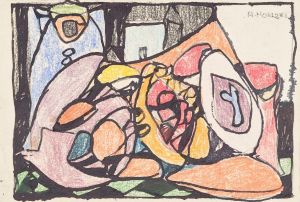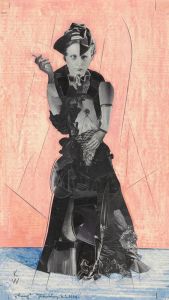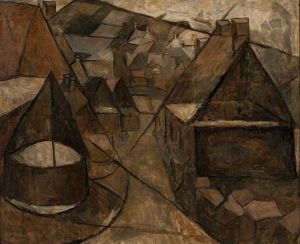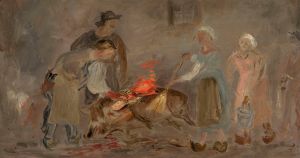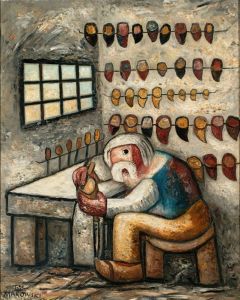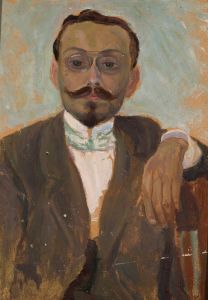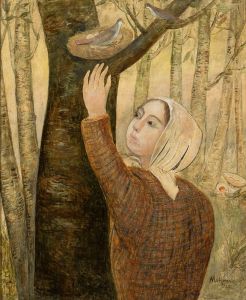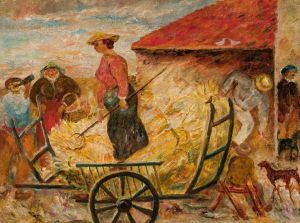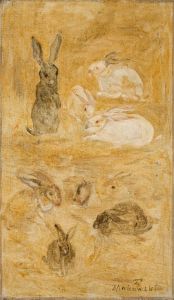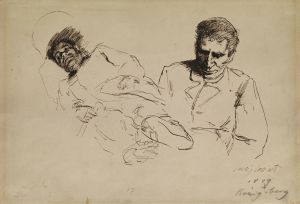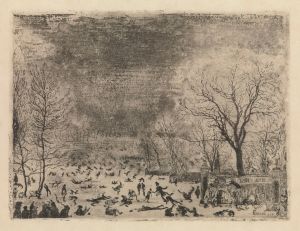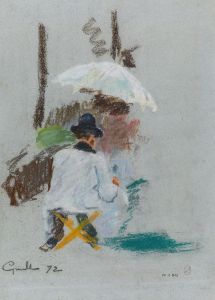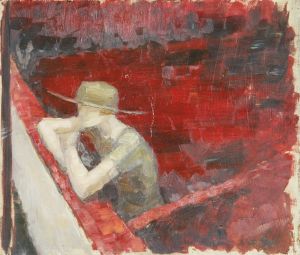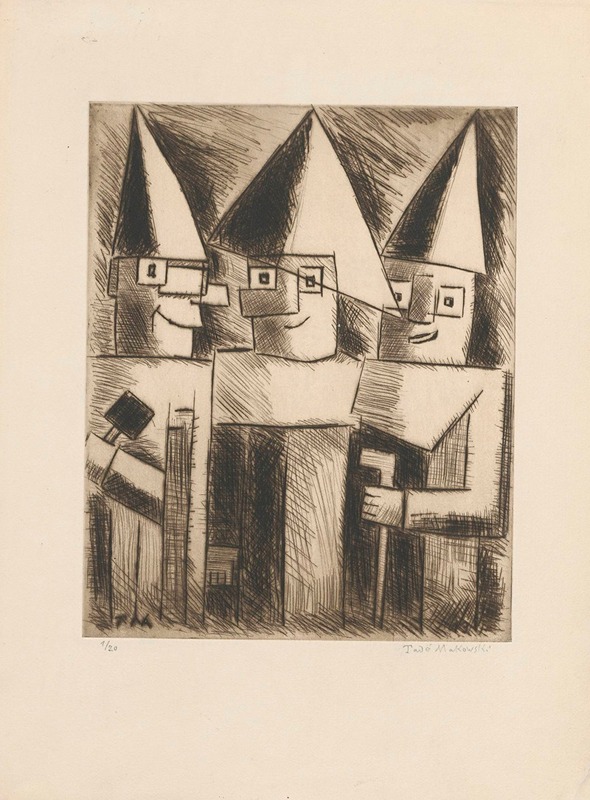
Masks
A hand-painted replica of Tadeusz Makowski’s masterpiece Masks, meticulously crafted by professional artists to capture the true essence of the original. Each piece is created with museum-quality canvas and rare mineral pigments, carefully painted by experienced artists with delicate brushstrokes and rich, layered colors to perfectly recreate the texture of the original artwork. Unlike machine-printed reproductions, this hand-painted version brings the painting to life, infused with the artist’s emotions and skill in every stroke. Whether for personal collection or home decoration, it instantly elevates the artistic atmosphere of any space.
Tadeusz Makowski was a Polish painter known for his unique style that combined elements of modernism with influences from folk art and symbolism. One of his notable works is "Masks," a painting that reflects his interest in the themes of childhood and the human condition. Makowski was born on January 29, 1882, in Oświęcim, Poland, and he initially studied classical philology before turning to art. He later attended the Academy of Fine Arts in Kraków, where he studied under prominent artists such as Józef Mehoffer and Jan Stanisławski.
Makowski moved to Paris in 1908, where he became part of the vibrant artistic community. Influenced by the works of Paul Cézanne and the Cubist movement, Makowski developed a distinctive style characterized by simplified forms and a focus on the emotional and symbolic aspects of his subjects. His time in Paris was crucial in shaping his artistic vision, allowing him to experiment with different techniques and themes.
"Masks" is a painting that exemplifies Makowski's fascination with the world of children and the use of masks as a metaphor for the various roles people play in society. The painting features a group of children wearing masks, a common motif in Makowski's work, which he used to explore themes of identity, innocence, and the complexities of human nature. The masks in the painting can be interpreted as a symbol of the personas people adopt in different social contexts, highlighting the contrast between one's true self and the façade presented to the outside world.
Makowski's use of color and form in "Masks" is notable for its simplicity and expressiveness. He often employed a muted color palette, focusing on earthy tones and subtle contrasts to create a sense of harmony and balance within the composition. The figures in the painting are rendered with a sense of naivety and charm, capturing the essence of childhood while also conveying deeper philosophical ideas.
Throughout his career, Makowski remained deeply connected to his Polish roots, and his work often reflects the influence of Polish folk art and traditions. This connection is evident in "Masks," where the simplicity and directness of the composition echo the aesthetics of folk art, while the subject matter delves into universal themes that resonate with audiences beyond cultural boundaries.
Makowski's contribution to the art world extends beyond his paintings. He was also a writer and art critic, and his thoughts on art and creativity have been influential in shaping the discourse around modern art in Poland and beyond. Despite facing challenges during his lifetime, including the difficulties of living through World War I and the interwar period, Makowski continued to produce work that was both innovative and deeply personal.
Tadeusz Makowski passed away on November 1, 1932, in Paris, leaving behind a legacy of work that continues to be celebrated for its emotional depth and artistic innovation. "Masks" remains one of his most recognized pieces, embodying the unique blend of modernist techniques and traditional influences that define his oeuvre.





